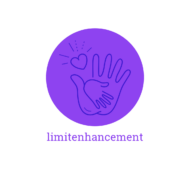Diving into the world of infancy and toddlerhood, we uncover a fascinating journey of rapid growth and development. It’s a time when the foundations of a child’s future are laid, shaping their physical, cognitive, and emotional well-being.
This article explores the intricate phases of infancy and toddlerhood, offering valuable insights into the milestones that mark these early years. From the first coo and giggle to the initial wobbly steps, we’ll delve into the critical stages that define this remarkable period.
So, whether you’re a parent, an educator, or simply curious about child development, this piece promises to illuminate the wonders of infancy and toddlerhood. Stay tuned as we unravel the magic and mystery of these transformative years.
Infancy And Toddlerhood
The Stages of Early Development
Spanning from birth to about 36 months, the stages of early development offer a captivating glimpse into the evolution of human abilities. During these early years, every aspect of a child’s development, be it physical, cognitive, or emotional, lays the groundwork for future growth.
Infancy: Birth to 12 months
 At this initial stage, infants experience a wealth of new sensory experiences. Visually, they progress from a muted grasp of their surroundings to recognising familiar faces. Likewise, mobility evolves from early reflexes, such as grasping and sucking, to crawling or even walking.
At this initial stage, infants experience a wealth of new sensory experiences. Visually, they progress from a muted grasp of their surroundings to recognising familiar faces. Likewise, mobility evolves from early reflexes, such as grasping and sucking, to crawling or even walking.
Entering toddlerhood, children achieve substantial gains in mobility and independence. They acquire essential abilities such as walking unassisted, climbing stairs or running. Simultaneously, they show remarkable cognitive advancements, from using simple words to forming short sentences.
Key Milestones to Look For
Recognising key milestones helps to ensure a child’s development is on track. These benchmarks act as checkpoints, guiding parents and educators in assessing progress and identifying potential issues.
Physical Milestones
Observing a child’s physical development starts from noting the first smile, usually seen by 2 months. By 6 months, most infants can roll over, and by 12 months, they often start walking. Toddlers, by their second year, typically manage tasks such as kicking a ball or scribbling.
Cognitive Milestones
In the cognitive realm, infants’ recognition of familiar faces by 2 months and the exploration of objects through shaking, banging, and throwing by 9 months serve as crucial indicators. In toddlerhood, completing sentences or rhymes in familiar books by 3 years is a key cognitive milestone.
Emotional and Social Milestones
Emotionally, the first year is marked by the development of attachment to parents and caregivers. From 9 months, infants begin showing clear preferences for certain people and toys. During toddlerhood, showing a wide range of emotions and starting to understand the idea of ‘mine’ and ‘theirs’ are key markers.
Tracking and understanding these stages of infancy and toddlerhood, and observing key milestones, provide parents and educators with invaluable tools to support a child’s healthy development and to identify possible areas requiring intervention.
Physical Growth and Changes
During infancy and toddlerhood, physical growth and changes occur at a brisk pace. These alterations form an essential part of a child’s development, having a prominent impact on motor skills and brain development.
Motor Skills Development
 Motor skill refinement is a critical facet of any child’s physical advancement. Infants break ground with rudimentary reflexes, responding to stimuli around them. At about 6 months, they often master basic hand-eye coordination, enabling actions like grasping a toy. By the age of 18 months, many toddlers have the dexterity to walk unaided, a significant milestone in the acquisition of gross motor skills. Moreover, a toddler may gain proficiency in using small objects – a notable advancement in their fine motor skills. Examples include picking up cereal pieces or scribbling with a crayon.
Motor skill refinement is a critical facet of any child’s physical advancement. Infants break ground with rudimentary reflexes, responding to stimuli around them. At about 6 months, they often master basic hand-eye coordination, enabling actions like grasping a toy. By the age of 18 months, many toddlers have the dexterity to walk unaided, a significant milestone in the acquisition of gross motor skills. Moreover, a toddler may gain proficiency in using small objects – a notable advancement in their fine motor skills. Examples include picking up cereal pieces or scribbling with a crayon.
Brain Development in the Early Years
In addition to physical prowess, brain development constitutes a vital component of growth during infancy and toddlerhood. In the initial three years, a child’s brain undergoes tremendous expansion, almost reaching 80% of an adult’s size. This rapid growth accounts for the significant cognitive leaps observed during this period.
A baby’s brain features about 100 billion neurons at birth. These neurons forge connections, called synapses, as the baby interacts with its surroundings. The rate of synapse formation is astounding, reaching up to 700 new connections per second. By the age of 2, a toddler’s brain contains over a hundred trillion synapses, establishing the basis for future learning and skills development.

